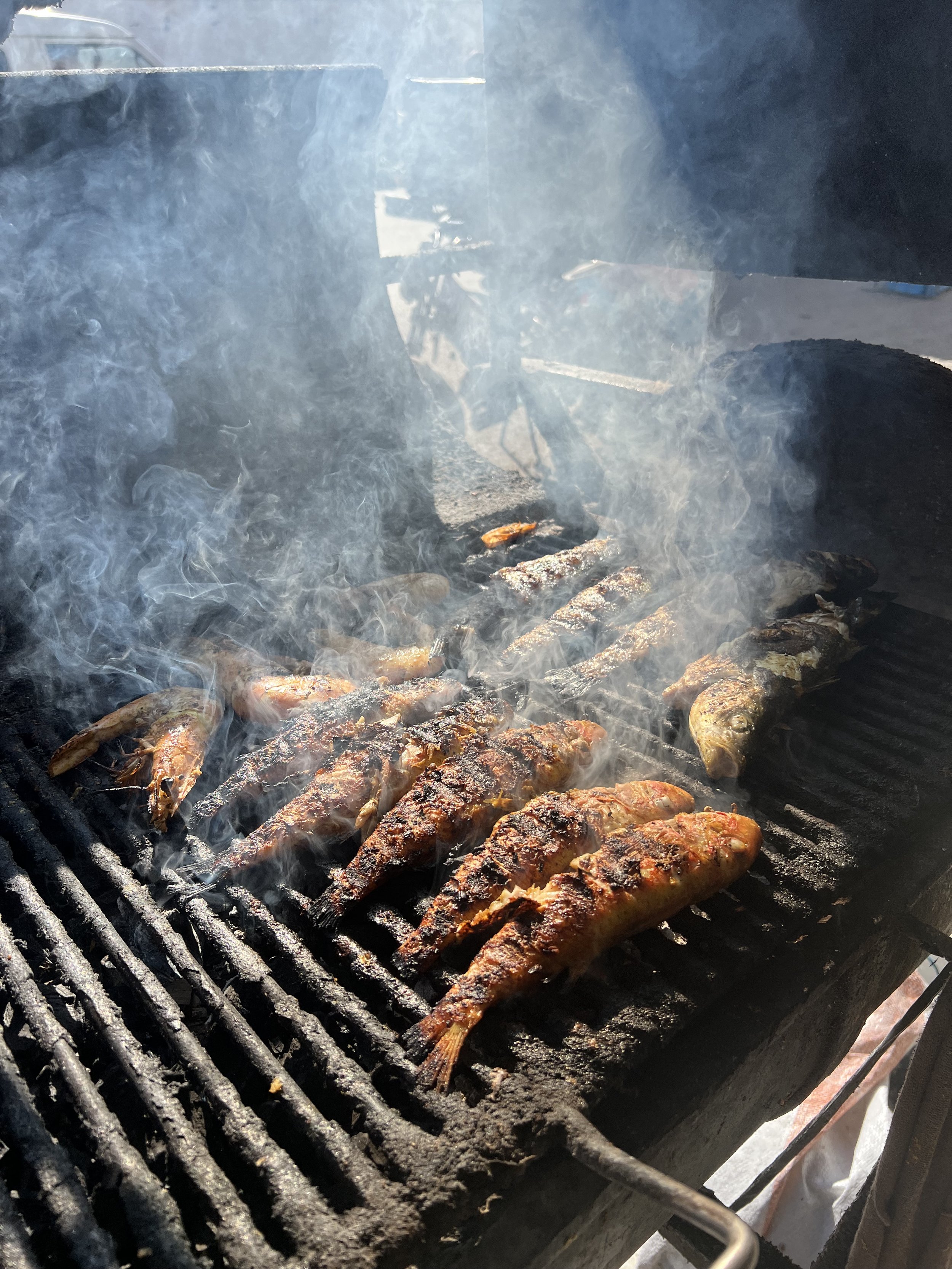Mechouia and misheard French
God tier peppers
I speak pretty good French, not fluent, but have-lived-in-the-country good, and I’m pretty confident with it.
A recent trip to Tunisia threw me completely off balance. The mixture of an Arabic accent and slightly unusual phrasing often left me completely at a loss as to quite simple replies.
An early example of this was with the Tunisian mlewi wraps, a chapati like flatbread smeared with a green spicy sauce, harissa, quite often dairylea cheese and then a mixture of other bits. The spicing mix was superb but I couldn’t put my finger on what was going on with the green sauce. Every time I tried to ask what the name of the condiment was I’d get a mumbled answer that sounded something like salat, or often it’d be harissa with another word following it.
Compounding the issue was that I never got to experience the green stuff on its own.
In this way it very much reminded me of how I feel about various grape varieties that I only ever encounter in blends. One would be aware of their presence but somewhat at a loss as to exactly what they contribute. Even now if you asked me what Bourboulenc brings, I’d struggle to give a more confident answer than just ‘a certain volume of liquid’.*
My Rosetta stone moment with mechouia, as I’d finally learnt it was called, came at the R’Mada picnic lunch. We’d taken Turkish style dark green peppers and tomatoes and roasted them on the embers. Once charred, they were peeled and roughly chopped (Abir had a fabulous method with a pair of scissors that was both elegant in its simplicity whilst also being the most awkward food preparation I’ve ever witnessed). The rough chopped pepper and tomato was then drenched in oil and we ate it on bread. Here was a simplified, almost diagrammatic preparation of the dish that was confounding me.
Green peppers are distinctive aromatically courtesy of methoxypyrazine (2-isobutyl-3-methoxypyrazine to be precise), the self same methoxypyrazines that we find in Sauvignon Blanc (and as part of a more complex aromatic spectrum in underripe Cabernet Sauvignon). An aromatic profile that’s easily overpowering and one that is rapidly gaining negative traction with the Anything But Sauvignon brigade.
The next day was my mechouia apotheosis, the little road side grill we’d spied out the window of the louage on our way into Kairouan was the venue. A couple of grilled red snapper were preceded by the classic duo of salat Tunis and mechouia with bread and fries.
Roadside grilled fish in Kairouan
This time the peppers had been slowly roasted on charcoal until close to disintegrating, smoky from the grill, there was a back note of garlic, roasted tomatoes were chopped into the mix contributing a neat punch of umami. Texturally it was like the peppers had been prepared in a mortar rather than chopped, the individual ingredients now a part of something more. A poached egg was roughly torn through the peppers and there was a flourish of traditional red harissa in the centre.
The aggressive pyrazine led greeness of the peppers was now part of greater whole, there was a richness, a smokiness, still a bit of kick from the heat of the peppers but it was now the beguilingly delicious spread that seemed to prop up and round out the punchier spice and heat of the harissa.
Sauvignon Blanc; as part of wine rather than the wine itself often does a similar thing. I’m thinking here of the best Bordeaux Blanc. Sauvignon, with Semillon for texture, time spent in oak on lees for a bit of smokiness, structure and alutolytic moreishness. Perhaps a spot of Muscadelle for a floral top note and now we have something uniquely delicious, a wine that, while Sauvignon dominated, is about as far from the bright bell pepper steel tank mono-varietal Sauvignon of popular disdain. The pyrazines now acting like a spritz of lemon juice in a cream sauce, adding an element of freshness and bite to a richer dish. Their contribution to the wine casting that bit of light on how it took me so long to spot such a dominant ingredient in my mystery Tunisian melwi ingredient.
*I’m sure Bourboulenc is a fabulous variety with a strong future ahead of it as more people look to its acidity in wines as the world continues to get hotter. I've just never had a 100% Bourboulenc to really focus on what it really tastes like.
The kitten to whom I’m pretty certain the grill restaurant will soon belong.


